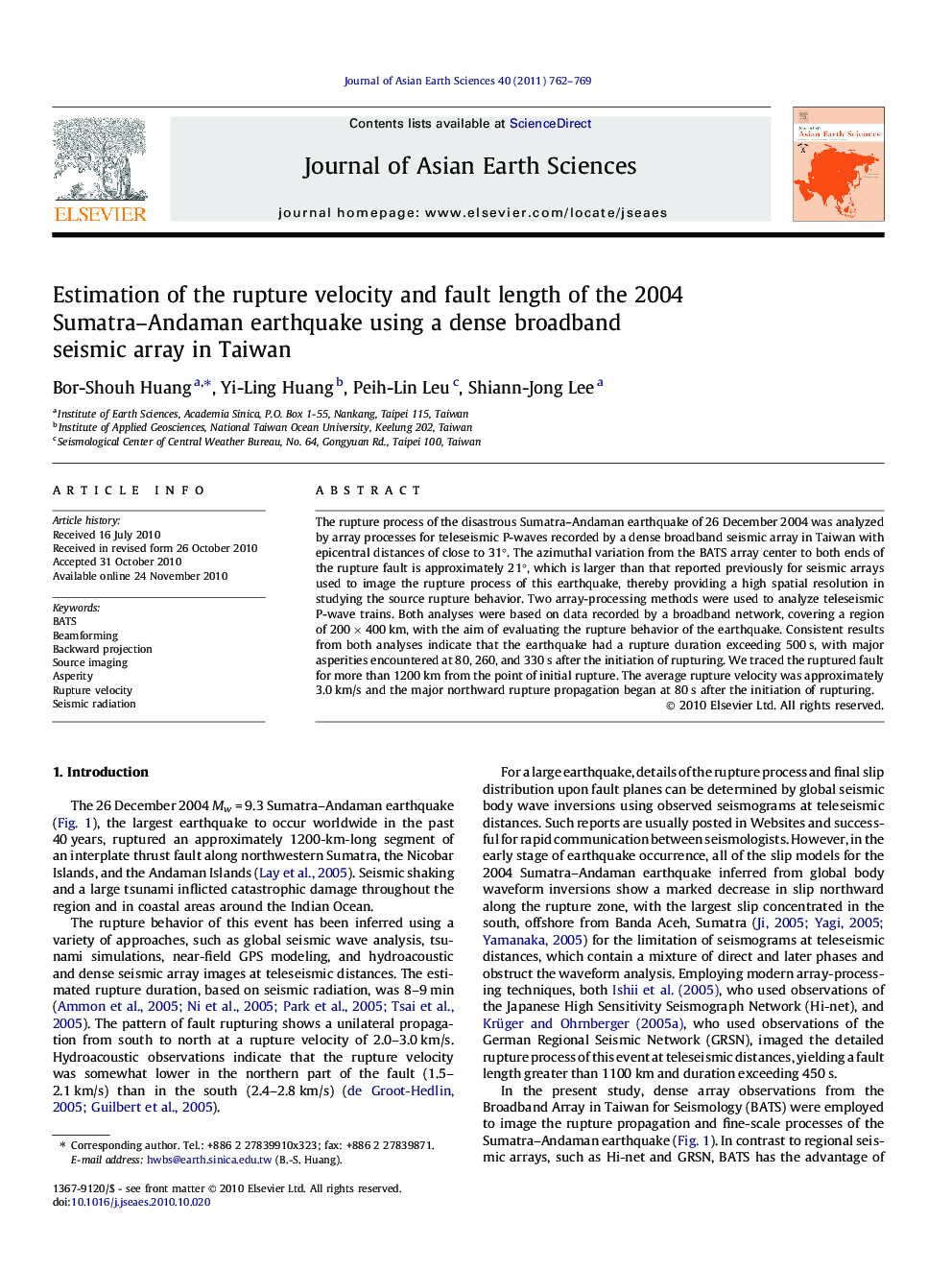| Article ID | Journal | Published Year | Pages | File Type |
|---|---|---|---|---|
| 4731772 | Journal of Asian Earth Sciences | 2011 | 8 Pages |
The rupture process of the disastrous Sumatra–Andaman earthquake of 26 December 2004 was analyzed by array processes for teleseismic P-waves recorded by a dense broadband seismic array in Taiwan with epicentral distances of close to 31°. The azimuthal variation from the BATS array center to both ends of the rupture fault is approximately 21°, which is larger than that reported previously for seismic arrays used to image the rupture process of this earthquake, thereby providing a high spatial resolution in studying the source rupture behavior. Two array-processing methods were used to analyze teleseismic P-wave trains. Both analyses were based on data recorded by a broadband network, covering a region of 200 × 400 km, with the aim of evaluating the rupture behavior of the earthquake. Consistent results from both analyses indicate that the earthquake had a rupture duration exceeding 500 s, with major asperities encountered at 80, 260, and 330 s after the initiation of rupturing. We traced the ruptured fault for more than 1200 km from the point of initial rupture. The average rupture velocity was approximately 3.0 km/s and the major northward rupture propagation began at 80 s after the initiation of rupturing.
Research highlights► The rupture process of the 2004 Sumatra–Andaman earthquake was analyzed by BATS. ► The results indicate that the earthquake had a rupture duration exceeding 500 s. ► The average rupture velocity was approximately 3.0 km/s. ► The major northward rupture propagation began at 80 s after the initiation of rupturing.
